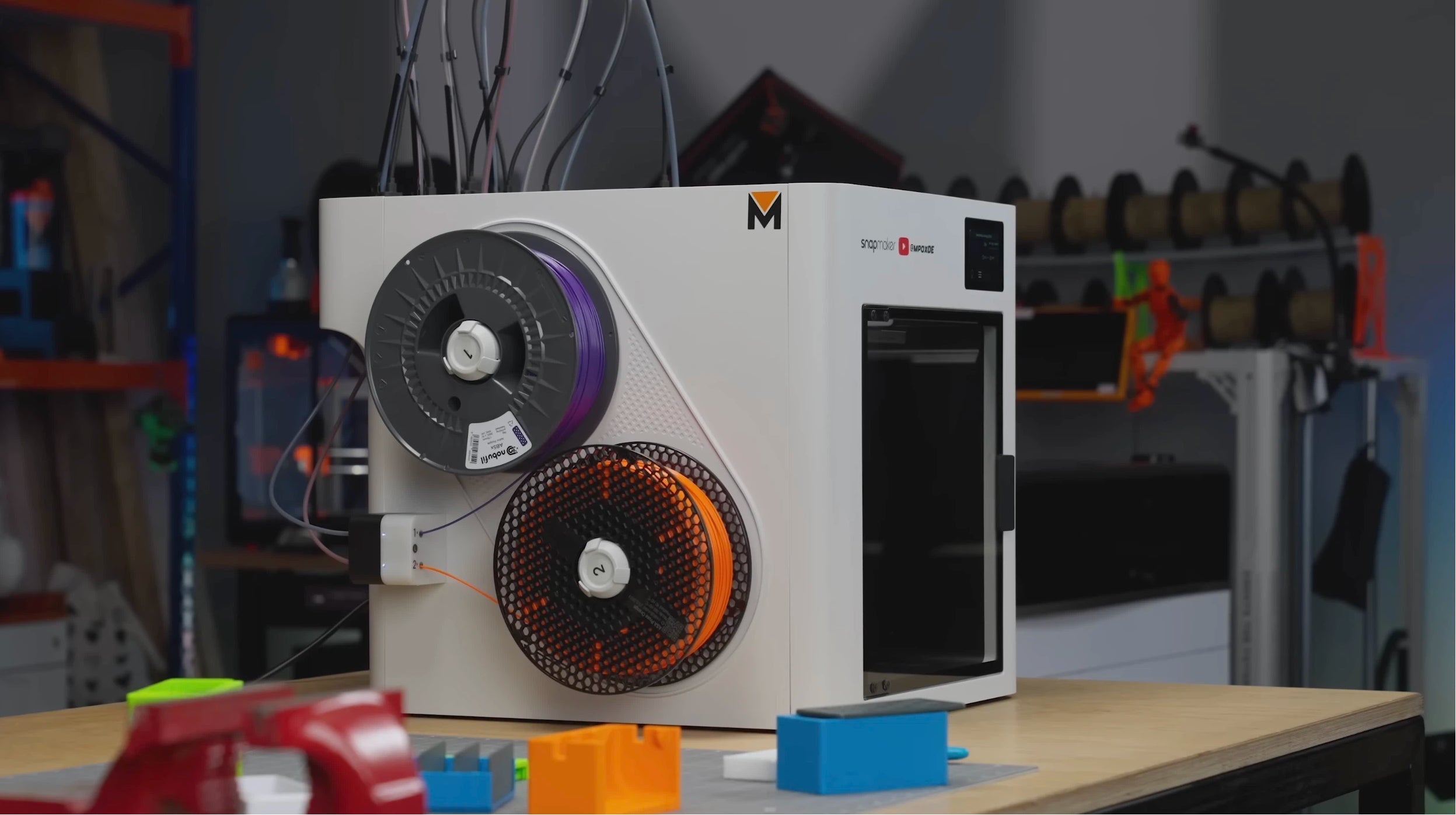Kate G. - June 22 2024
FLSUN S1 - Big, Fast, and Loud

Image credit to YouTube @OnceinaSixSide
FLSUN has brought something new to the market. The FLSun S1, gonna to be the fastest 3D printer to ever exist, with a 8-minute Benchy file that's preloaded onto the machine.
8 Minute Speed Benchy
On paper, the specs of FLSUN S1 are hard to believe, at 1,200 mm/second. Supposedly, it’s twice as fast as the Bambu Lab X1 Carbon or any other modern 3D printer. Naturally, I was skeptical. However, once you get hands-on with this machine and examine the engineering behind it, it starts to make sense.
How did they make this printer so fast? It all comes down to the construction and component selection. The large broad panels on the sides, about 5-6 inches thick, are solid extruded aluminum, making the frame super solid and minimizing unwanted vibrations. This allows for extremely fast movement without much shaking.
The components add to the stiffness as well. Thicker belts are less stretchy than the thin ones usually found on 3D printers. They use HG-style linear rails instead of the MGN series. HG rails have four rows of recirculating bearings, which better support the rail as it moves, adding to the strength and stiffness.
There are also Servo-style stepper motors up top, which are closed-loop controlled with encoders to detect any skipped steps, allowing for error correction and pushing the servos harder for faster movement. Carbon fiber rods support the motion while being as light as possible, common in high-end Delta printers.
The turbo-style CPAP fan, embedded and not removable, has a high-speed turbine blade like a car's turbo, forcing air through tubing to cool parts quickly. This powerful fan doesn't add weight to the tool head, allowing for high accelerations.
The hot end has a custom design, longer than a volcano hot end but shorter than a super volcano, with a standard volcano-length round ceramic heating element. It has a custom machined heat block and a standard V6-style nozzle, potentially replaceable with a CHT hot end if desired. It seems to have some internal flow splitting device for high flow rates.

Flsun S1 hotend. Image credit to Youtube @GamingTrendVideos
What’s Inside The Box?
Let's get this thing open and see what we're dealing with. Immediately, I'm seeing some hollow cavities in the box with nothing in them. It's not completely packed to the brim, but it's padded very well to prevent damage during shipping.
There’s 0.5KG of high-speed PLA, a box with some tools, and a complete ultra-high flow hotend assembly. This hotend has a really big ceramic heating core, a bi-metallic heat brake, and a ginormous melt zone, even bigger than a standard volcano. The nozzle has a standard V6 thread, but the geometry looks unique and might be proprietary. This 110 mm³/s hotend capable of pushing a lot of plastic. In the box, we also have a touch screen, a power cable and an instruction manual.
Print Size
FLSUN S1 is a very large printer. The build volume is a whopping 320x320mm and 430mm high. That makes it a great printer for a lot of full-size items like most helmets and a lot of cosplay gear that can be printed as a single piece instead of being cobbled together.
Delta vs. Cartesian vs. Core XY
In a traditional Cartesian motion system, you have X, Y, and Z axes that are independently driven. In a Core XY motion system, two motors control X and Y, while the Z-axis remains independent. In a Delta printer, three motors work in sequence to control the vertical motion of the print head and the XY position within the build volume. The print head is suspended by carbon rods. The position of these linear rails determines the angle of the carbon rod, thereby determining the print head’s position and height. Unlike traditional systems where the Z-axis and XY-axis are independent, in a Delta printer, they work together to achieve full motion range.

The motors in this motion system use closed-loop control, with a PCB attached to each stepper motor actively monitoring its position. This prevents lost steps and layer shifting, unlike some printers that use open-loop control.
Integrated Filament Dryer
At the top of the printer, there’s a filament dry box that is also a filament dryer. It is actively heated to dry the filament during printing, and the LCD displays the current humidity and temperature of this chamber. This is a very nice touch.
CPAP Cooling
Instead of a traditional cooling setup with a small fan on the print head, this printer has an external blower that blows air through a hose to the print head. This setup allows for a much bigger fan than what you could mount on the print head, providing better cooling for high-speed printing, especially with filaments like PLA that need it.
LIDAR & AI Failure Detection
In addition to a robust motion system capable of ultra-high-speed printing, there are added features such as a built-in camera for AI failure detection and LIDAR for automatic flow calibration. These features are similar to those found in the Bambu Lab X1, and Creality K2 Plus.
User Interface
FLSUN S1 has a large front LCD display that shows real-time print speeds and various statistics, providing a nice interface. The printer runs on Klipper firmware, theoretically, it could have a Fluid or Mainsail front end accessible via the web.



